It is always a culinary adventure when visiting Hong Kong, and this recent trip was no different. A friend of mine works for Harbour City, and informs me that a new restaurant is to open and I need to try it. I manage to secure a spot the day after opening, to visit Haku, a French concept using predominantly Japanese ingredients.
The restaurant, a collaboration between Chef Hideaki Matsuo of Kashiwaya in Osaka, Japan, and Chef Agustin Balbi, who is Argentinian. Chef Balbi has spent many years in Japan and his menu is a reflection of the aesthetically stunning cuisine, but is also, well thought out and exquisitely executed. Take a moment to study the various place settings, each piece carefully curated, with descriptions of history and inspiration.
The meal begins with a mélange of amuse bouche including tomorokoshi (Japanese corn) tart with corn purée, and duck leg confit; nori cone topped with dashi cream, and marinated isaki (grunt fish); deep fried kibinago (silver stripe round herring) and beetroot tsukemono served in the center of a deep red rose. Each bite, an expression of the eloquent techniques utilized in both French and Japanese cuisines. Chef directs you in the order which each is to be enjoyed, ending with the tart beetroot to cleanse the palate before the first course arrives.
We begin our omakase meal with Tomato/Bellote Ham, a dish comprising a myriad of tomatoes from Saga, Japan with kamasu escabeche, 34-months Bellota ham, shio konbu, Fukuoka crystal salt, and finished with sakekasu (the remnants left over from sake production) crumble. The ham, fish, and shio konbu combine to create the most spectacular umami on the palate, not to mention, the varying textural differences from each component featured.
Ayu/Daikon Tsukemono, our second dish includes ayu (Japanese sweet fish) from Miyazaki, something very traditional this time of year. It is usually fried or grilled, and at Haku, the fillets are served tataki style, while the fish heads are deep fried for textural contrast. Pickled pearl onions are infused with turmeric, or beets, to give them the distinctively yellow and red hues that pop on the plate. Daikon pickles and yarrow mimic the bitter flavors of ayu innards, which are traditional served intact within the fish.
The next course, Hokkaido Uni/Brioche, is one of my favorites, purely because I am an uni fiend. Beautifully light toasted brioche is topped with A grade sea urchin draped with aka miso (or red miso), and topped with pretty hanaho, or shiso flowers.
Our fourth course, Foie Gras/Lotus Root arrives as a duo – the foie gras mousse in pretty Japanese crockery, and a traditional tempura basket for the black tempura lotus root chips — black from squid ink. The idea is to slather a little bit of the foie gras terrine prepared with duck consommé gelée, on the lotus root chips, and enjoy. The mousse is sublime, with rich unctuous creaminess, offset by the slightly tart black cherries purée, and bits of cherry garnished atop the foie. A sprinkling of citrus salt, made from the rinds of different citrus, add another level of oompf to this course. The only unfortunate mishap here is the greasiness of the lotus root chips which overwhelmed the subtlety of the mousse.
Nagasaki Tuna/Kristal Caviar is perhaps my most favorite course of all. Chu toro from Nagasaki, is married with exclusive Polmard beef — a six generation breeder of cows from France – and topped with Kristal caviar by Kaviari, Paris. The philosophy behind this dish is what Haku is all about. The focus is predominantly on the natural flavors of the ingredients, with the chef being the bridge, or vehicle, in which to bring together the natural, to the mouths of diners. There aren’t many components to this dish, which makes it even more spectacular when you taste it. Served with rice tuilles which you may choose to pair with the chu toro, tartare concoction to add a crunchy contrast to the dish.
Our sixth course, and the last savory item of the meal is Kagoshima A4 Wagyu/Eringi a warm dish of the most magnificent beef I’ve tasted in a very long time. The melt-in-your-mouth tender wagyu is accompanied by eringi mushrooms, wild asparagus, baby kabu (turnips) and bronze begonia petals, served with a piquant sauce created from cow bones and Australian black truffles.
The meal comes to a close with two panna cotta desserts. The first utilizes white peach (shiro momo) from Saga, with panna cotta, diced peaches, Hokkaido yogurt foam, and finished with peach granita.
The second is the same preparation, but using amanatsu, a hybrid citrus resembling a grapefruit, and is believed to have derived from the pomelo fruit.
Before you walk out the door, Chef Agustin presents a whimsical end to your meal – a childhood favorite of cotton candy, so diners may leave Haku with a nostalgic feeling which brings a smile to their faces.
It is difficult to relay through words and photos, how exquisite this meal was, and how impressed I was by the entire experience. It is well worth the HK$1500/US$192 price tag attached to it.
Haku
Shop OT G04B
Ground Floor
Ocean Terminal, Harbour City
Tsim Sha Tsui
Hong Kong
Tel: +852 2115 9965
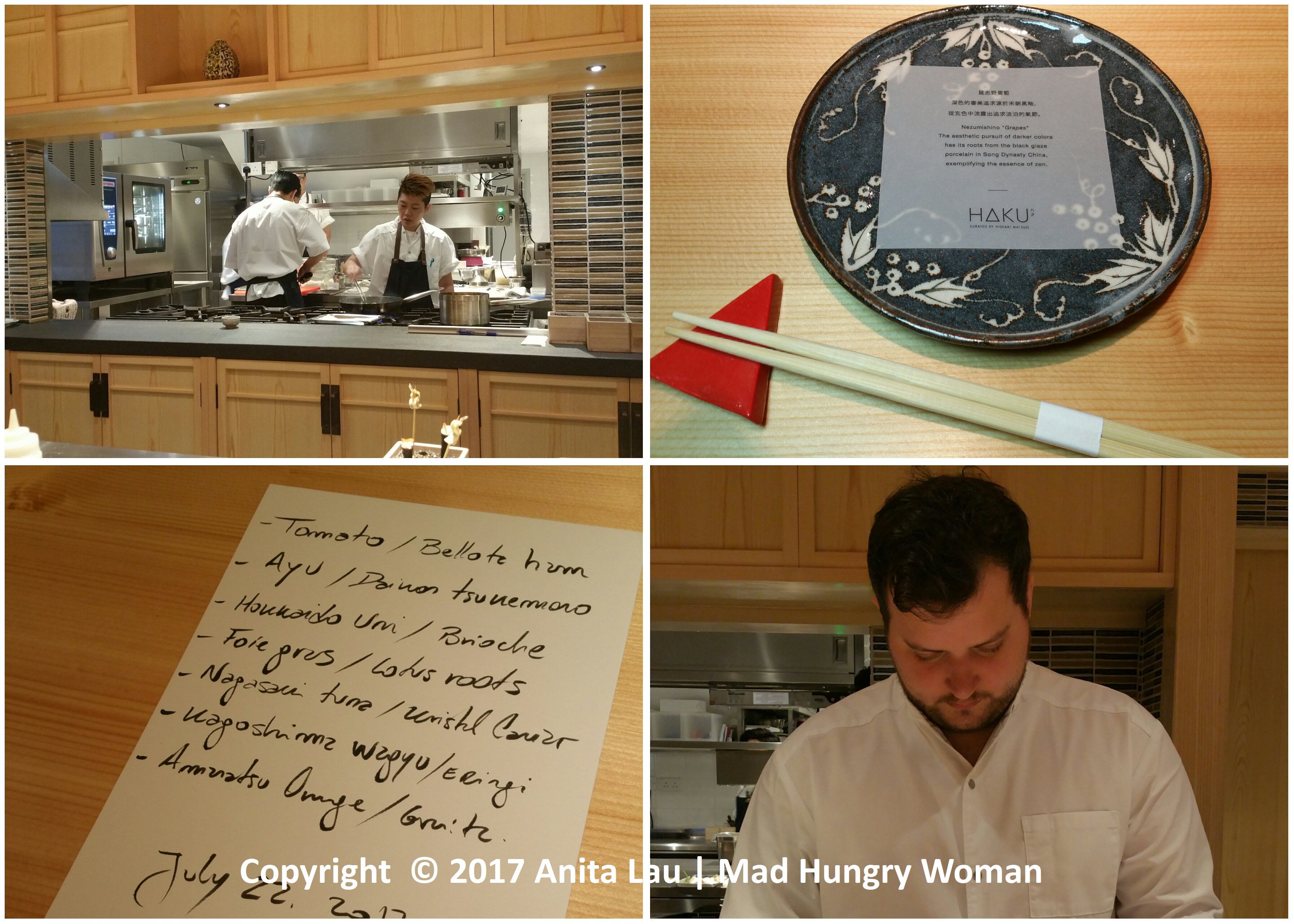
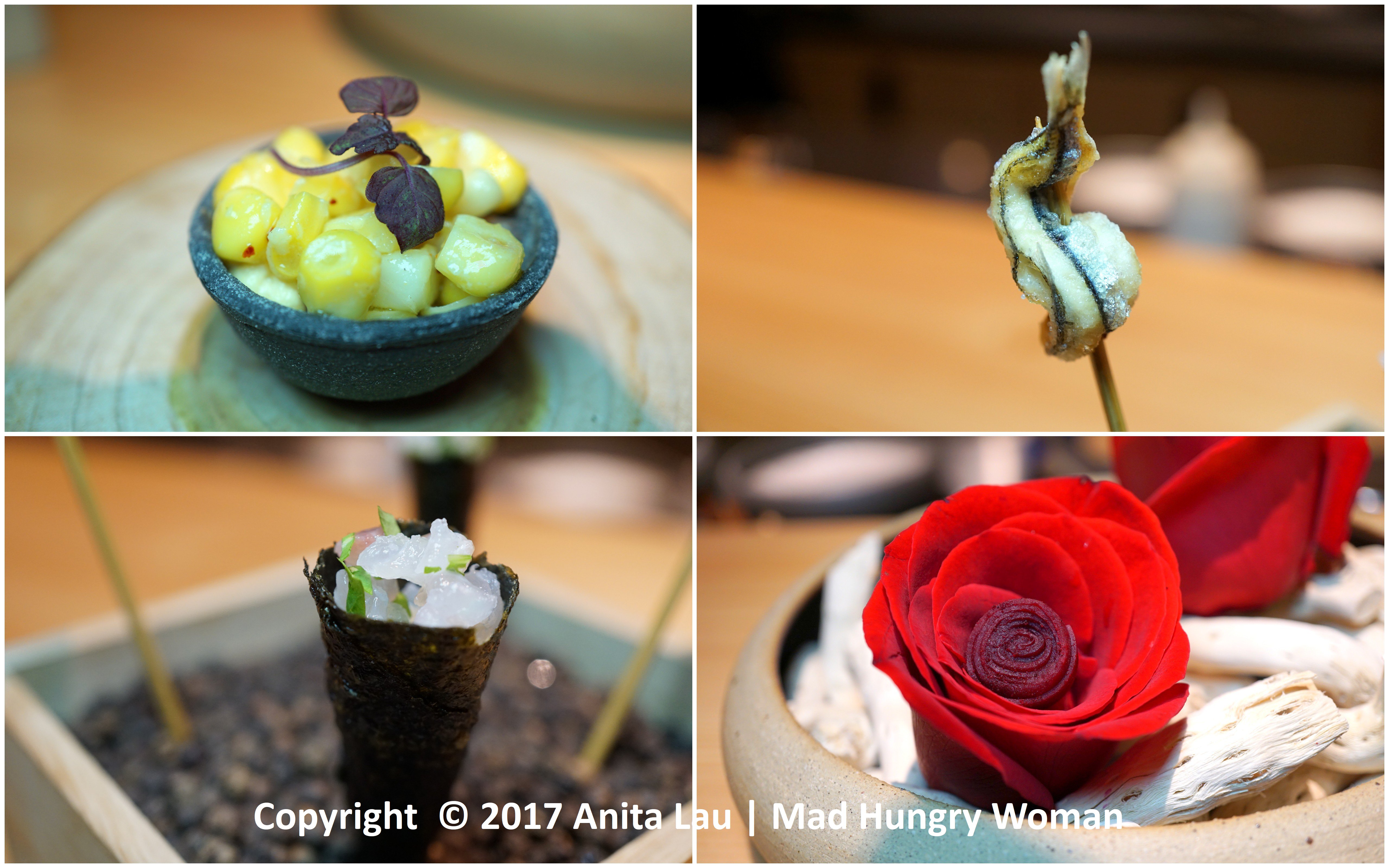
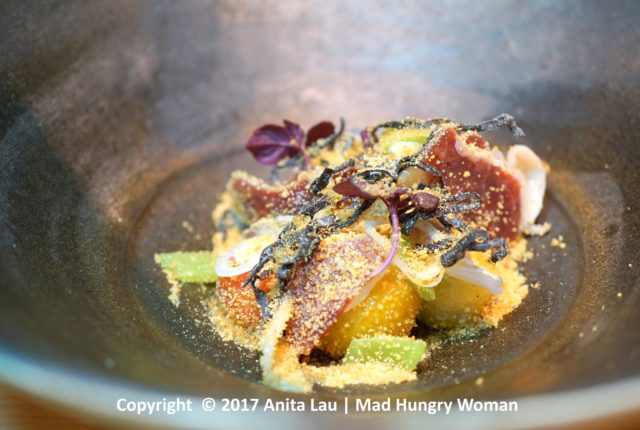

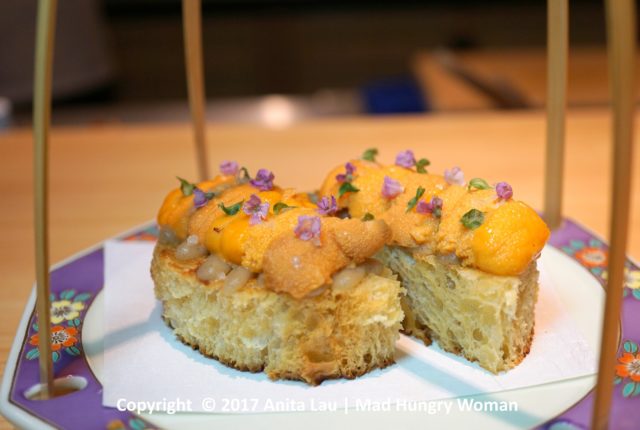
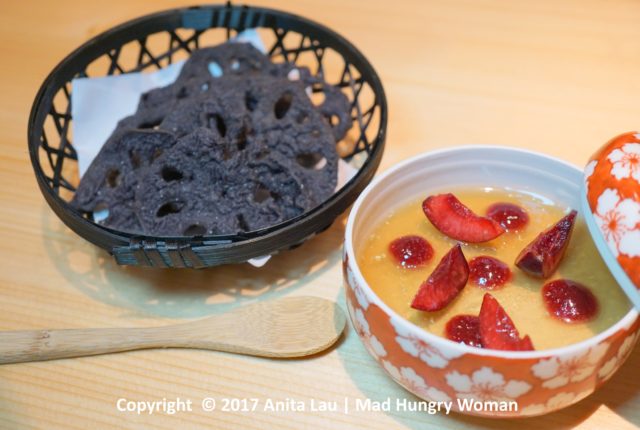
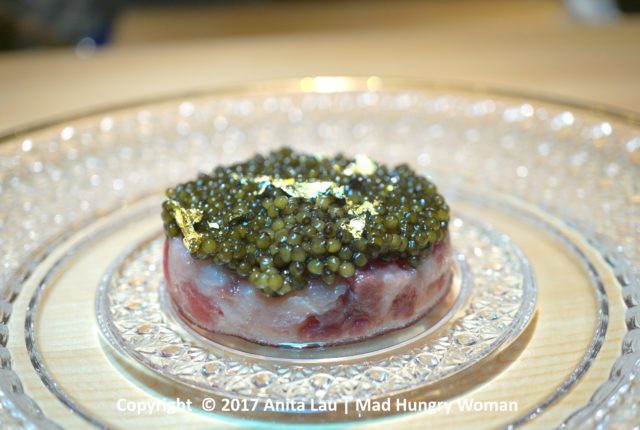
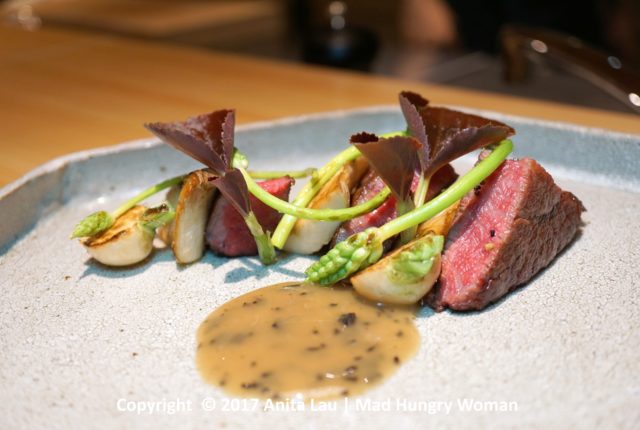
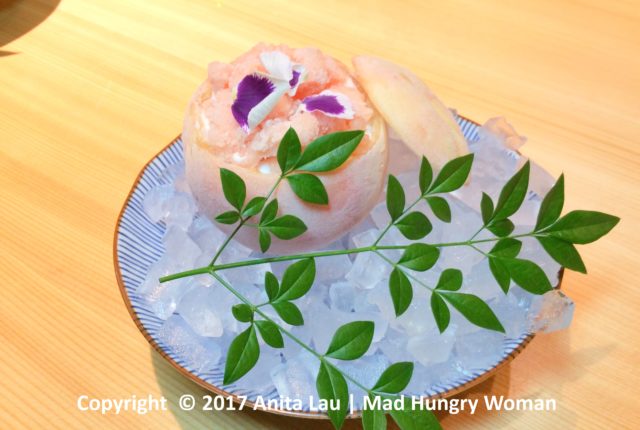
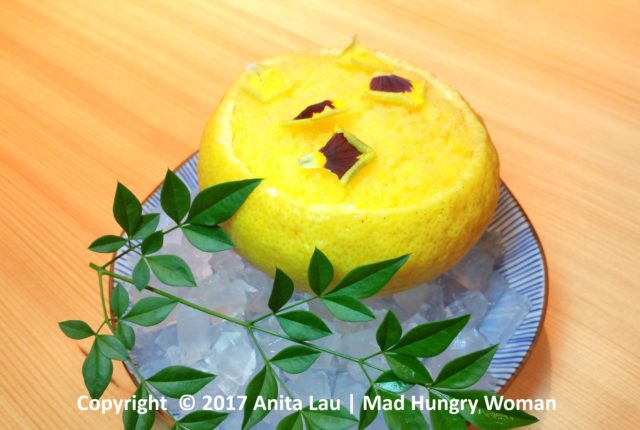
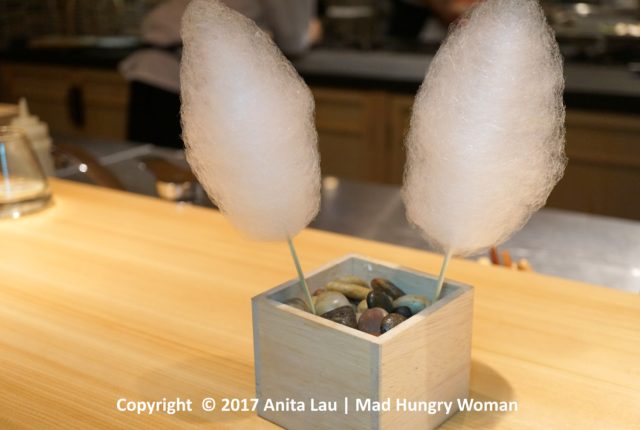







Awesome article! Love to read it and all are looking good, tasty & yummy.